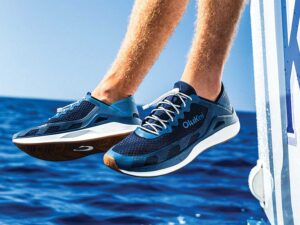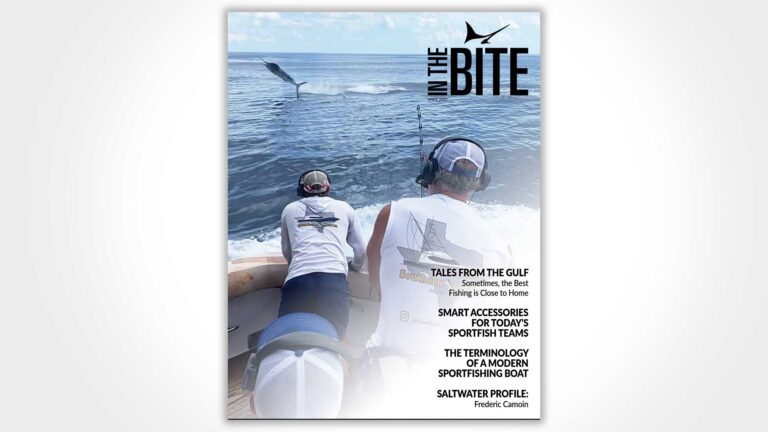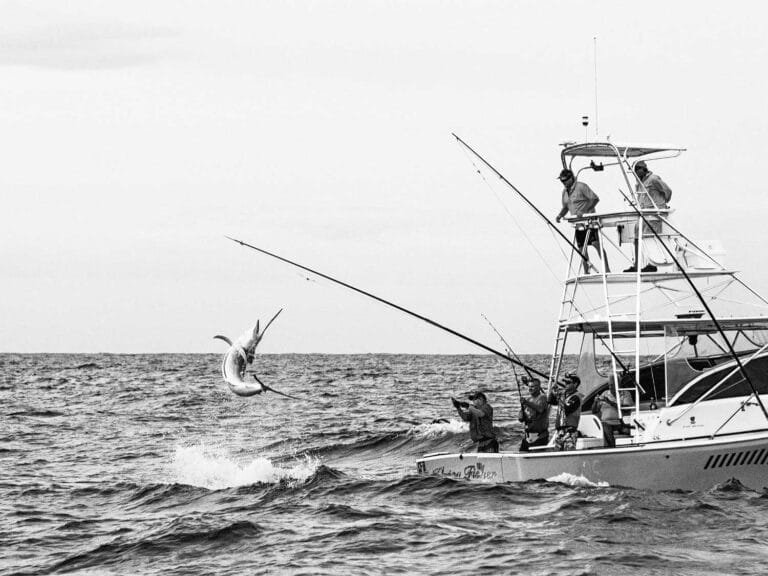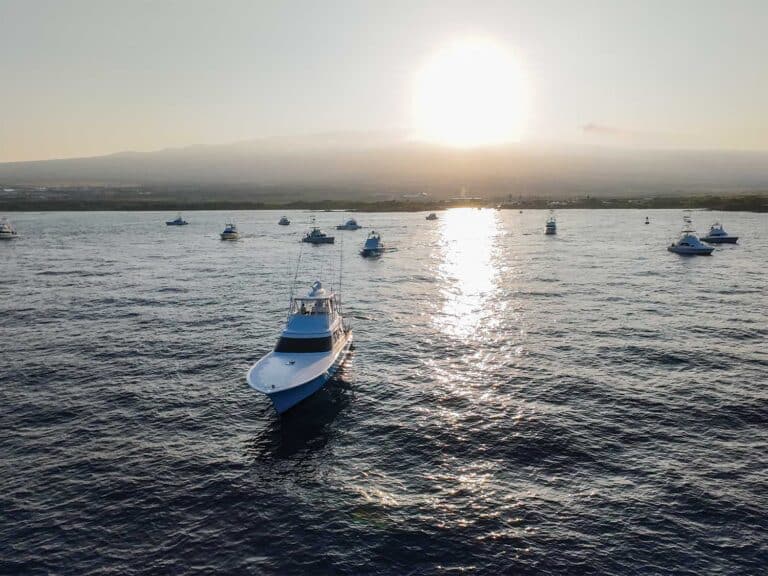
Frank Johnson once described his background as half-yuppie/half-hillbilly. Sadly, the engineering genius behind Mold Craft Fishing Products and the Unibutt died this past September. He was 77. Frank was that rare businessman with a gift of gab. He was more fun to be around than anyone you can name, and I’d wager that anyone who spent time with him has at least one crazy story to tell. After all, this is the guy who once lost his tower to a low bridge.
There was the time I fished with Frank and his son, Frank Jr., or “Jocko,” during the final day of the Pompano Beach Fishing Rodeo. A longtime Rodeo volunteer, Frank was supposed to stage a Bimini start with a flare from his 25-foot Mako Soft Head. Turns out, he didn’t need to. He hadn’t noticed, but the wiring in the livewell was smoking so badly that everyone figured he had already fired the flare, and away they went: The day was off to an auspicious start. Later that afternoon, Jocko lost his balance and fell overboard into the spread of fast-swimming lures with very sharp double hook-sets. We retrieved him, and things got better when Frank caught the winning white marlin on one of his lures. Like a lot of brilliant people, there was more to the man than appearances and actions would suggest.
Early Years
Frank grew up in Middletown, New York, and his uncle, a well-known trout guide in the Catskill Mountains, made sure he learned the basics of fishing. He also taught Frank to shoot, which led to his first job running a gun and tackle store. Frank attended high school by day, and by night worked in the store and had a second job as a mechanic for two years until he graduated.
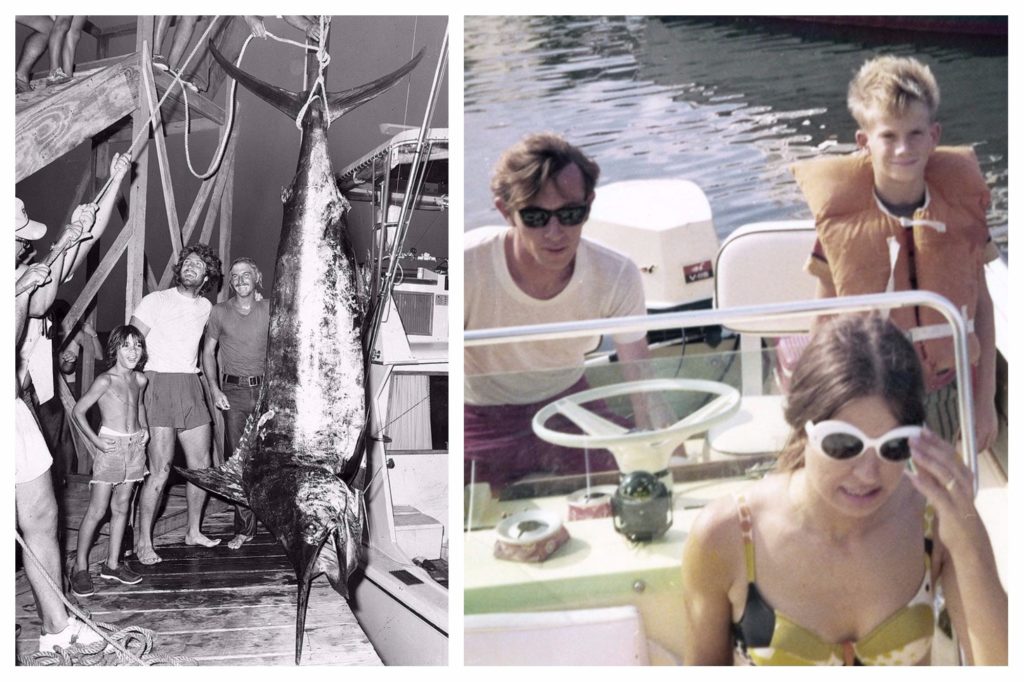
Frank figured the only way he was going to be able to attend college was on the GI Bill, so twice he tried to win an ROTC scholarship, and both times he was first runner-up. After graduation, he headed to Hartford, Connecticut, for a job with Pratt & Whitney Aircraft Company, where he was enrolled in a three-year apprentice machinist program — the parchment certificate for his achievement still hangs in his old office at Mold Craft. That was followed by more instruction in tool- and die-making, and finally in production engineering. The result of which he said was worth more than the college degree he had originally sought. “If you got less than a B in a regular college, you were thrown out of the program at Pratt,” Johnson explained. “There was a lot of pressure on you to learn the coursework and be able to perform the job in the real world by making things in the shop.”
A Problem Solver
Between Frank’s genius for finding solutions to problems and his work ethic, he was on the fast track in production engineering at Pratt & Whitney and designing specialized machinery. Over time, he married and had the first of his two sons, Jocko. “I grew up chasing wrenches for dad working after school and Saturdays here at the shop,” says Jocko. When Frank left Pratt & Whitney, he was chief engineer of nonconventional processes or, as he put it, “designing all kinds of weird stuff for rockets and jet engines.”
To help his wife convalesce from mental illness, Frank moved the family to Pompano Beach, Florida, and took a job at Chemform to develop prototype machinery. But Frank bought into an injection-mold manufacturing business in 1971 that eventually made everything from pop-up lawn sprinklers to pacemakers. He partnered with Fred Dormand, an engineer with a similar background, and together they made Mold Craft a success.
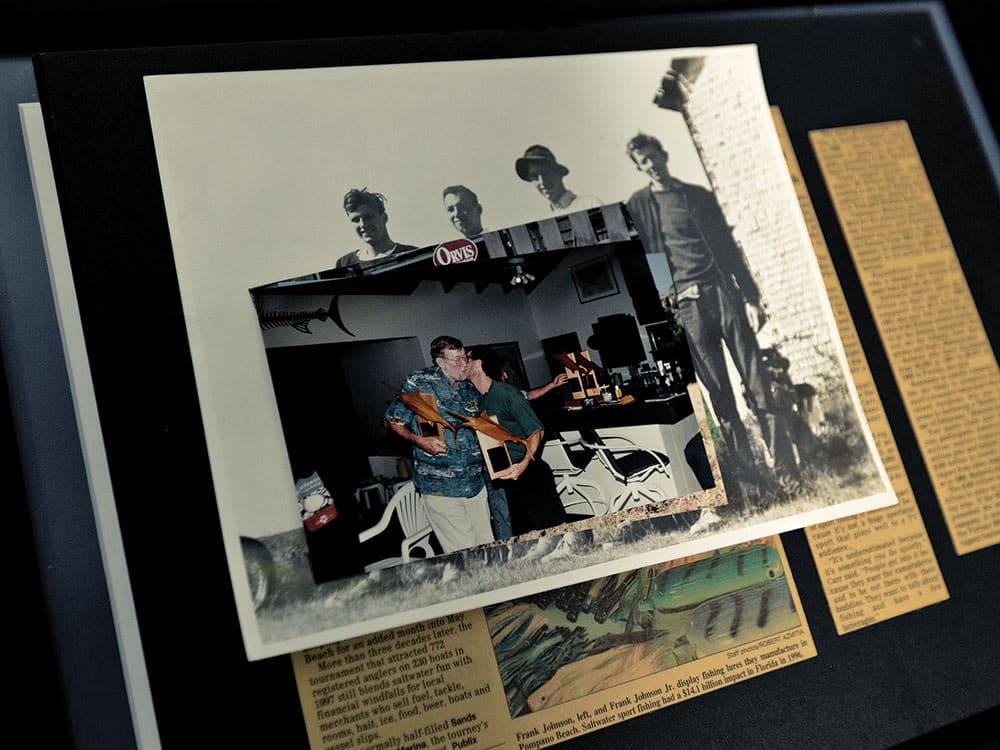
One of their clients was Cordis Corporation of Miami, and Frank and Dormand developed tooling for one of the first mass-produced pacemakers. “I remember it being Fourth of July weekend when dad finally came up with a solution to a problem with the battery system. He worked 96 hours straight on that product — not bathing or shaving — and just catching catnaps here at shop. Before that, dad was always clean-shaven. After growing a beard that week, he never shaved it off again,” says Jocko.
“I had a good business, but I was stressed out,” Frank once told me, reflecting on those times and responsibilities at his different roles. “You did a job, and you could lose everything if it didn’t come out right. All my life I had to fight being a disorganized person in an organized profession: Dealing with pacemakers and jet engines, you have to cross all the T’s or someone might lose their life.”
He Turned to Fishing
Frank’s salvation was saltwater fishing. He bought a small boat and joined a number of fishing clubs, and he quickly learned his craft with the help of Scotty Boyd at Boyd’s Tackle in Fort Lauderdale. “I specialized in kite-fishing for sails,” Frank said as he noted a catch of 16 by himself in one day. This passion for learning also led to an introduction to Capt. Al Black, for whom he engineered a mold for the Black’s Clip outrigger pin.
By this time, he was also using his fishing and engineering background to build molds for all types of hardware and hook holders, as well as the tooling for Capt. John Emery’s saltwater fly reels for Fin-Nor. In 1974, Boyd suggested that Frank try to solve a problem he was having with the hardware used in building custom offshore fishing rods, namely the lack of interchangeable parts. Frank used reverse engineering to develop a system that allowed any rod butt to align with parts using the same-size ferrule. The outcome of the exercise: the famous Unibutt, now marketed by AFTCO. Frank also addressed the issue of corrosion on the rod seats built from chrome-plated brass by machining the butt and reel seat from anodized aluminum. The highly acclaimed Roller-Troller outrigger clip was also produced about the same time.
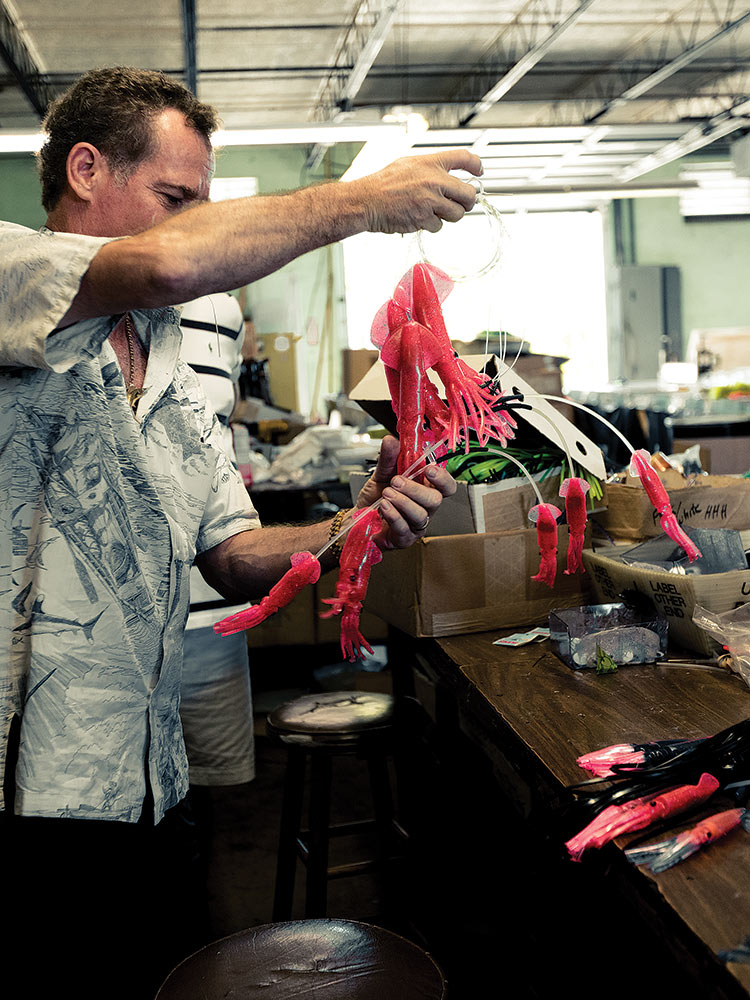
The following year, he built a mold for Boone Baits using the first fully automated injection-molding machine for Plastisol to produce the Trout Tout. Then he and Dormand came up with an idea for a larger version for offshore use, but the problem was finding the right customer to sell it to. They ended up pitching it to Phil Bart, who marketed novelty items like the Tipsy Tumbler Doll and fishing products like the Teaser Lure, Snapper Clip and Leader Keeper, which they had also engineered. Bart had a backer who agreed to build it but ended up backing out at the last minute after they had already built the machine. Frank, through a twist of fate, ended up owning the machine.
Next, he showed the lure to Boyd, who suggested he turn it into an artificial squid. That’s how Mold Craft’s original Squid Machine was born. Available in five colors of 6-, 9-, 12- and 16-inch lengths, the squids were used both as hook baits and for daisy-chain teasers, and they proved to be a dynamite lure for commercial longliners targeting swordfish. Today, the Squirt Squid is sold in more than 100 colors, and Mold Craft is the largest domestic manufacturer of full-bodied artificial squid. Since the early days, Jocko has expanded the Mold Craft product line to include a thin-walled version of a swimming squid that is lighter and softer, and there is even a version with scales.
Birth of the Softhead
At about the same time, Capt. Peter B. Wright began to concept his own version of a softheaded lure. “Capt. Jeff Fay was my partner in Humdinger, and we had a client, Steve Zuckerman, who was trying to capture the 20-pound light-tackle Pacific blue marlin record. Basically, we were getting our butts handed to us over the bait problem and our need to troll faster. We tried ‘juicing’ mackerel with formalin, and after a few tries, we got the formula right and had some success.”
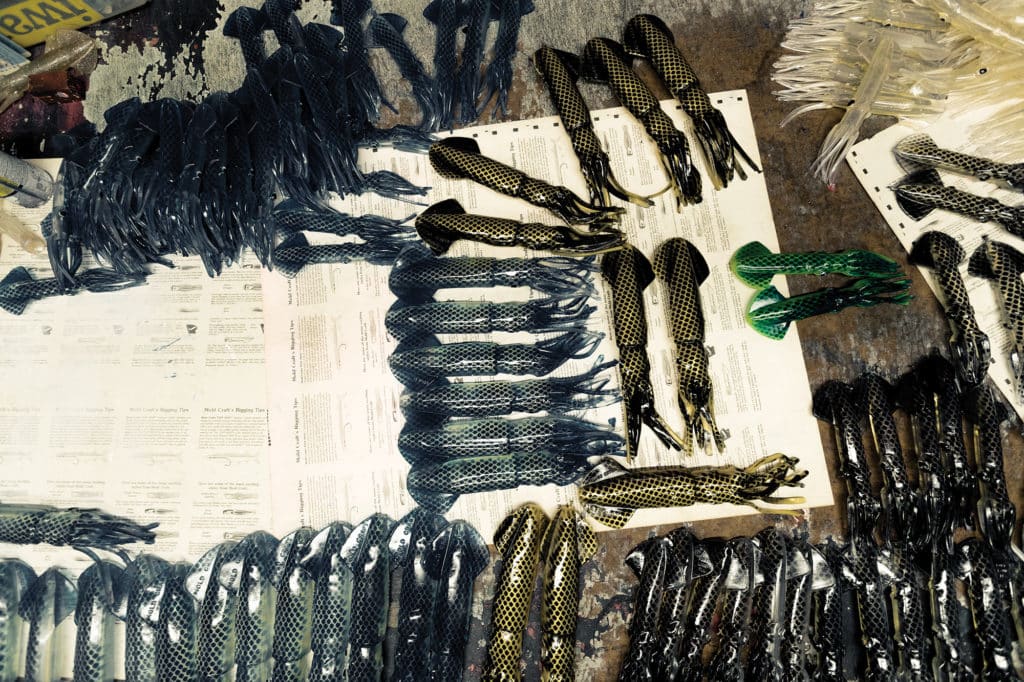
In 2007, Marlin ranked Mold Craft’s Super Chugger No. 2 and the Wide Range No. 1 on its top 10 list of the greatest lures of all time. The Wide Range is the company’s best-seller, responsible for more record billfish than any lure ever manufactured.
Wright is like a dog after a bone: He knew there had to be a way to marry the effectiveness of natural bait with the action of a hardheaded lure that could be pulled at high speeds — up to 17 knots. This would also solve the problem for when natural baits were not available. Wright then met a fisherman at a tackle shop in Kona who showed him his homemade lures: “They were the typical truncated conical design, but they had a nylon skirt attached using a rubber band. That gave me the idea,” says Wright. He constructed his soft-bodied lure, aptly named Ca-Ca for its appearance, from strips of tightly rolled inner tubes in a truncated conical shape with a skirt. Wright proceeded to catch enough fish in Hawaii to prove his new lure worked, and he was convinced the lure could be used for dropping back and teasing a fish. “I had to go where they got a lot of hits: Cozumel,” says Wright.
In 1977, it just so happened that Frank, Boyd, Charlie Forman and Bruce Moorlins were scheduled to fish with Capt. Tiny Brown in Cozumel. Brown had been having great success with Frank’s lure, but as luck would have it, the group ended up fishing with Wright on the 37-foot Rybovich Wooden Nickel. And as you can imagine, the loquacious Wright and equally verbose Johnson got to dickering at dinner the night before about who had developed the best lure.
To decide which bait worked best, Frank and his team took one side of the boat while Wright and his mate, McGrew Rice, fished the opposite side. Frank’s team caught seven sails and Wright got three. “They were raising all the fish on Wright’s lures and eating Frank’s squid,” says Boyd. By the end of the day, the idea of Wright’s softheaded Ca-Ca lure and Frank’s injection-molded technology were married into what we know today: the world-renowned Mold Craft Wide Range.
Record Chasers
Among the captains tasked with providing input on the Wide Range lure was Capt. Skip Smith, a longtime Boyd client who was embarking on an around-the-world fishing expedition aboard Jerry Dunaway’s The Hooker and The Madam. When it came to designing lures, Frank wisely chose to make them as different components that snapped together so captains like Smith could tune them for their needs. “In the early days, I used to take a Wide Range lure and trim the head for additional strikes,” explains Smith, who swept the Gulf Coast tournament season in 1981, including the famous Poco Bueno Tournament in Texas, using his modified Wide Range lures. That was the start of Mold Craft’s Hooker lure, named for Dunaway’s boat.
“I’m a problem solver. I take ideas from a lot of people and put them together.”
— Frank Johnson
Providing lures for research and development to captains across the globe became a proven business model. The resulting product line of 16 designs, such as the plunger head Bobby Brown, Reel Tight and Super Chugger, are all a result of such collaborations. Frank never considered himself to be an inventor: “I’m a problem solver. I take ideas from a lot of people and put them together,” he once said. That’s how the Unibutt, Wide Range and almost all of Mold Craft’s products came about. Jocko has continued in his father’s footsteps, developing lures such as the Hoo Hooker, which was an idea that came from continued requests for a dedicated ballyhoo skirt. “It includes the best characteristics of the Lil’ Hooker — the square face and the smoke trail — in a smaller size, and it is the only product we’ve made where the tooling was paid for even before we started,” says Jocko.
Among his early supporters was Capt. Brad Simonds, then of St. Thomas in the U.S. Virgin Islands. The Key West captain remains a fan of softheaded lures over hard-plastic designs. “I really like the simplicity of their design and the fact the lures could be fished in virtually any application,” says Simonds, who along with Smith was practicing bait-and-switch fishing in the early ’80s. “They’re super at teasing up fish.”
Unconventional Uses
Frank traveled extensively and promoted his products at boat shows, billfish tournaments and clubs like the West Palm Beach Fishing Club where, as always, he made an impression. “Frank was giving a slide presentation on using his skirted Lil’ Hooker head in conjunction with natural trolling baits for sailfish. About every sixth slide, up would pop a photo of some scantily clad buxom babe. Needless to say, he had the rapt attention of everyone,” says Tom Twyford, the club’s executive director.
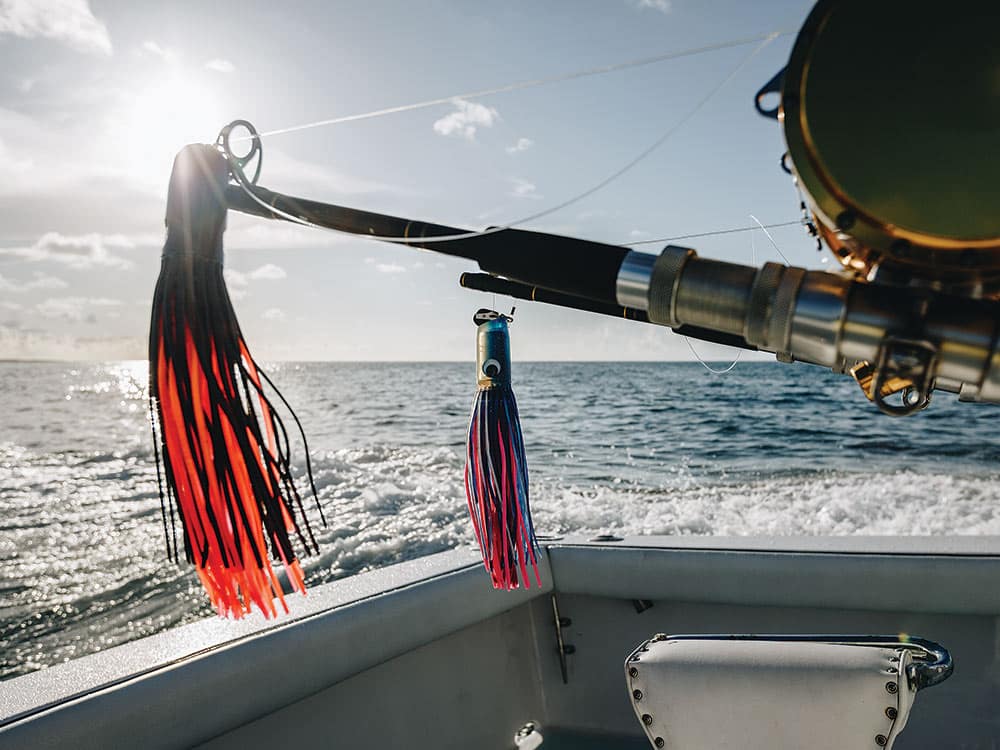
“He truly believed the adage ‘sex sells’ — for real,” says Jocko in reference to Frank’s development of the Model 25 into a novelty item from the Squirt Squid. In 1978, the adult industry voted it the No. 1 novelty item. “And we’re still selling it — with batteries,” Frank once said.
In 2007, Marlin ranked Mold Craft’s Super Chugger No. 2 and the Wide Range No. 1 on its top 10 list of the greatest lures of all time. The Wide Range is the company’s best-seller, responsible for more record billfish than any lure ever manufactured. And it’s a screaming good deal at less than $40.
Frank was always tinkering with his designs and trying to improve their action, says George Poveromo, a longtime friend and the host of George Poveromo’s World of Saltwater Fishing. “He never rested on his laurels — just look at all the fish [his lures have] caught. At one time, they held every line-class record for Atlantic blue marlin, including the current 1,402-pound all-tackle Atlantic blue marlin record. His lures are responsible for more world records and more wins in tournaments than all the other lures combined,” says Poveromo.
“He was this really crazy guy,” says Bill Munro, who fished with Frank aboard his beloved 25-foot Mako. “A superstar in this industry, Frank was one of the lucky ones. He made his living doing what he was passionate about, and he will surely be missed.”
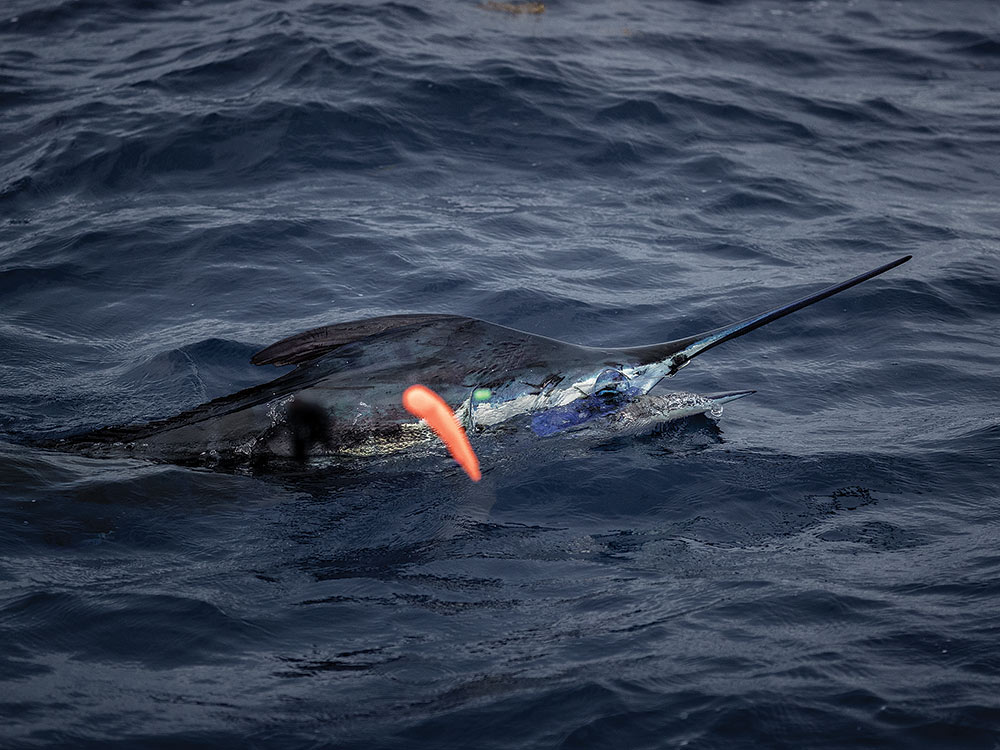
About the Author
Jan Fogt lives in Stuart, Florida, and has contributed to Marlin for more than 30 years. Her works have covered a wide variety of topics in the sport of big-game fishing, including personalities, conservation and the intricacies of offshore fishing.



